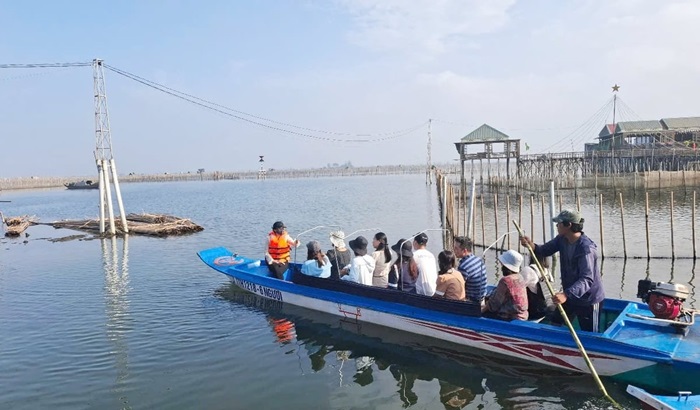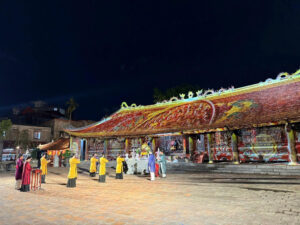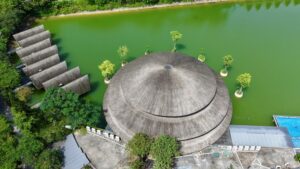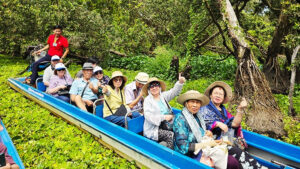With about 60 per cent of Asia's population expected to be living in cities within the coming decade, many urban centres in the region are facing infrastructure shortages that threaten to produce a disaster unless steps are quickly taken to address the challenges, warned speakers at Singapore's Large Infrastructure Project (LIP) Forum over the weekend.
Cities like Dhaka, Mumbai, Kolkata, HCM City and Jakarta are choked in smog and filth must do more to address pollution, unhealthy living environments and poor transportation "before it is too late," said the forum chairman Paul Hugentobler, who is also the chief executive officer of Swiss cement maker Holcim.
Hugentobler also urged regional countries to "learn from Singapore's achievements in infrastructure excellence."
The island-state has successfully housed its five million residents and supplied clean water, a healthy environment and a stable lifestyle, Hugentobler said.
He also praised New Delhi for its progressive determination in recent years to build critical infrastructure such as good roads and a mass transit line.
Lam Siew Wah, deputy CEO of Singapore's Building and Construction Authority, said the city had targeted certification of 80 per cent of commercial buildings as green by 2030, up from the current 16 per cent. Old buildings would be retrofitted with proper ventilation, energy-saving chillers, automated equipment and insulation to meet green standards, he said.
Such retrofitting was simple and not costly, and was necessary to promote responsible action to protect the environment.
The authority also planned to raise the bar in the coming years as technology advanced, in order to make buildings more efficient and ecologically sound.
Don Philips, the head of a British infrastructure firm, warned that unless steps were quickly taken to combat climate change by reducing carbon emissions and energy consumption, many coastal settlements "could be underwater." Rising tides from polar ice melts could submerge key waterfront towns all over the world, many of them vital financial and banking centres.
In farming societies such as Thailand, India and Viet Nam, the Singapore urban model may fall short as a solution, Hugentobler admitted. Singapore's is purely focused on being a financial hub and port, akin to Hong Kong, but for much of Asia, urban migration is a far more disturbing trend, particularly for countries with populations of 60 million or more, 70 per cent of which live in the countryside.
Many migrants arrive in cities to be exploited by employers and face substandard living conditions in slum dwellings with water and power shortages, he said.
Losing farming communities wasl also not only undesirable but potentially dangerous, Hugentobler said. During deep recessions such as the 1997-98 financial crisis, many hard-hit economies were save from social unrest as farms served as safety nets for the unemployed. The same could be said of China's recession in the years that followed. Again, millions of jobless were able to return to the farms and ride out the slump.
Hugentobler said that one of his greatest satisfactions was to see "with every visit to Singapore, more trees, more flowers and more green areas." Landscape, while one of the more underrated aspects of the green movement, was actually one of its most powerful forces in capturing hearts and minds, he said.
Celebrated architect Dr Ken Yeang has also made a point of fusing nature in all his designs. Holcim honoured the Penang-born Yeang for his recent work for Kuala Lumpur-based Putrajaya Holdings' eco-commercial building project, an office centre with rich tropical gardens.
When Hugentobler asked Yeang what the architect could do to persuade government leaders to embrace green building codes, Yeang answered, "It is like raising children. You reward them when they do good things. And you punish them when they don't."
Singapore has followed this model in granting building permits and approvals, Hugentobler observed, and failure to comply was not really an option.
Architect and National University of Singapore lecturer Nirmal Krishnani said the danger today was that the green trend had become fashionable and that this might rob the movement of its more serious aims. However, some attempts to go green have had interesting results, he said, such as one hospital's "wellness" area that attracted many nearby residents to join in, cultivating a variety of flora and fauna and making the spot into a Singapore landmark.














